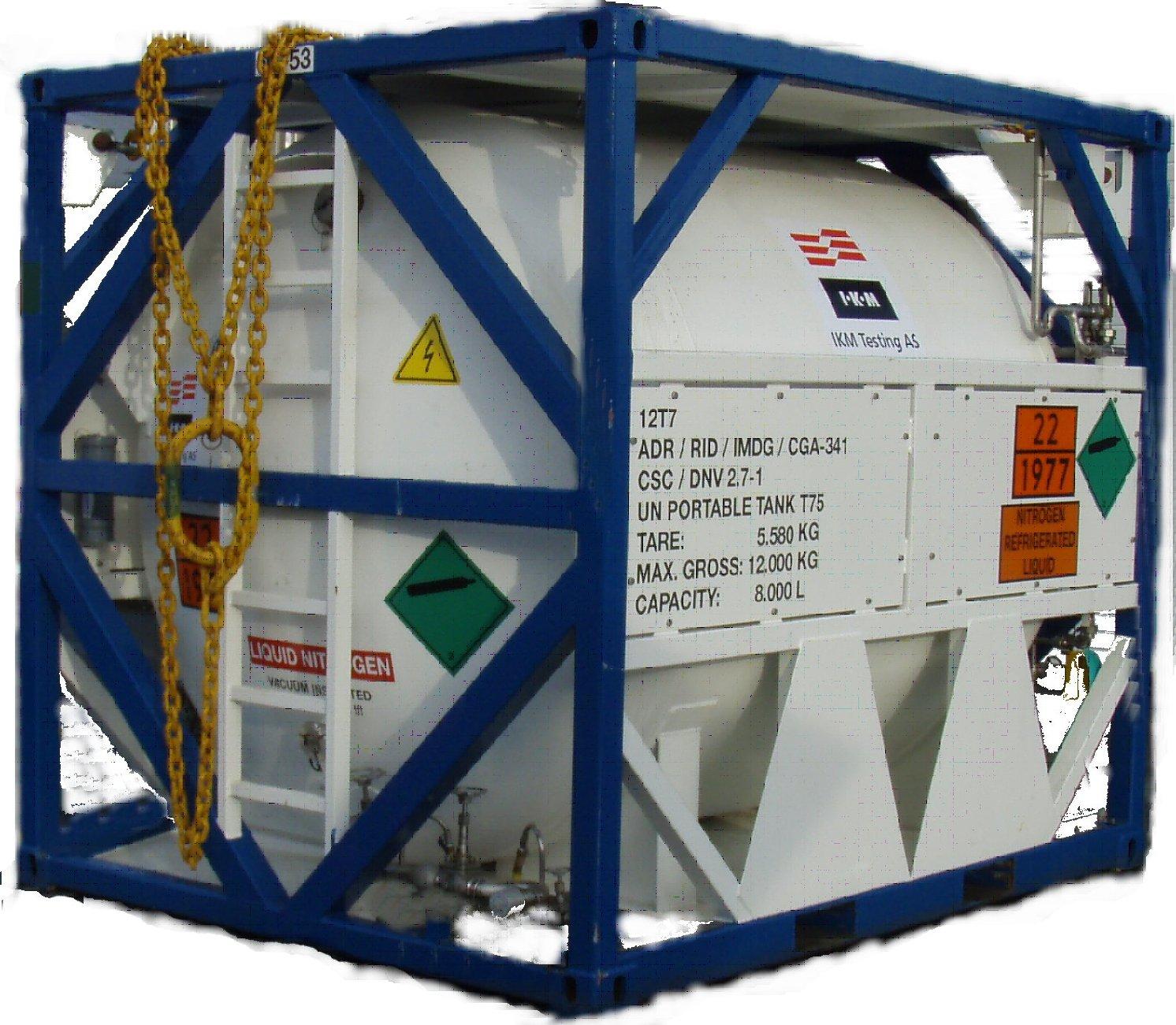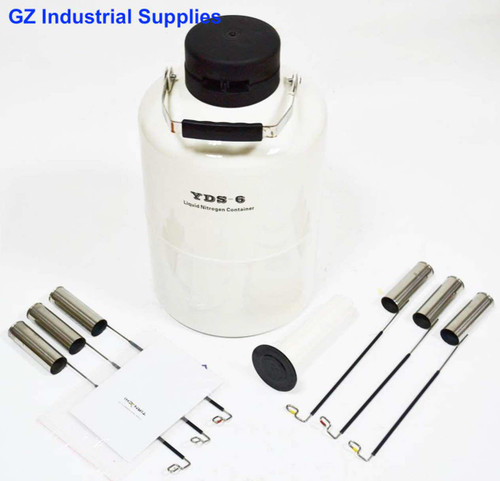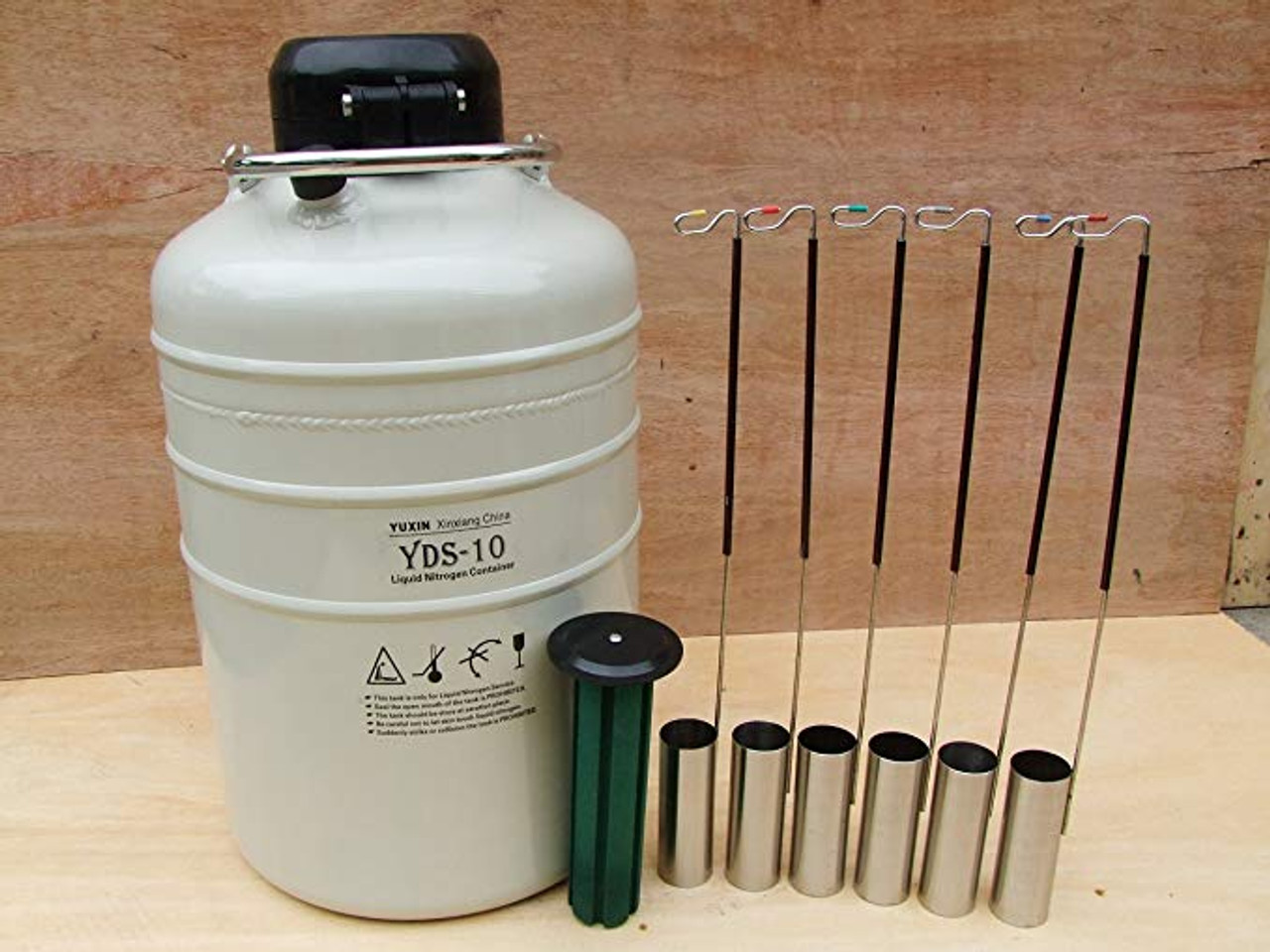Cryogenic Offshore Tanks Explained: How They Work and Why They Are Used
- Cryogenic offshore tanks are critical in the offshore industry, enabling the safe storage and transportation of liquefied gases at extremely low temperatures. These specialized tanks are designed to withstand the challenging offshore environments and provide efficient storage solutions for cryogenic substances like liquefied natural gas (LNG) and other industrial gases.
- The primary working principle of cryogenic offshore tanks revolves around insulation. These tanks are equipped with advanced insulation materials and techniques to minimize heat transfer into the tank and maintain the low temperature required for storing liquefied gases. Effective insulation helps to reduce boil-off and preserve the stored gas in its liquid state.
- Various insulation materials, such as vacuum panels, cellular glass, aerogel, and cryogenic perlite, are used to create a thermal barrier around the tank. Insulation systems may also incorporate multilayer insulation (MLI), which utilizes reflective foils and low-conductivity spacers to minimize radiation heat transfer.
- Cryogenic offshore tanks often feature a double-wall construction, with a vacuum space between the inner and outer shells. This vacuum space serves as an additional insulation layer by minimizing heat transfer through conduction and convection. The vacuum reduces the transmission of heat from the outer environment to the inner storage area, thereby maintaining the desired low temperature.
- Cryogenic offshore tanks are designed to withstand the high pressures generated by the liquefied gases. Pressure relief valves and safety devices are installed to prevent overpressure situations and ensure the structural integrity of the tank. These safety mechanisms are crucial for maintaining safe operating conditions and preventing catastrophic failures.
- The structural integrity of cryogenic offshore tanks is essential for their safe and reliable operation. These tanks are constructed using robust materials, such as carbon steel or stainless steel, which possess the necessary strength and durability to withstand the harsh offshore conditions. The tank's design takes into account factors such as structural loadings, seismic considerations, and dynamic forces associated with transportation and installation.
- Cryogenic offshore tanks incorporate specialized liquid transfer systems to facilitate the loading and unloading of liquefied gases. These systems typically include pumps, pipelines, and valves that enable the controlled transfer of cryogenic liquids into and out of the tank. Safety features, such as emergency shutdown systems and leak detection systems, are integrated to prevent spills and ensure the safe handling of the stored gases.
- To ensure optimal performance and safety, cryogenic offshore tanks are equipped with monitoring and control systems. These systems provide real-time information on variables such as temperature, pressure, and liquid level inside the tank. By continuously monitoring these parameters, operators can identify any deviations or abnormalities and take appropriate action to maintain safe operating conditions.
- Cryogenic offshore tanks are designed to withstand the dynamic forces and stresses associated with transportation by vessels or offshore structures. They are equipped with features such as lifting lugs, securing points, and stability systems to ensure their safe transport and installation in offshore locations.
The working principles of cryogenic offshore tanks revolve around effective insulation, pressure control, structural integrity, cryogenic liquid transfer systems, monitoring and control systems, and transportation considerations which will be explained comprehensively later in this content. By incorporating these principles, cryogenic offshore tanks can safely store and transport liquefied gases, making them essential for various offshore applications such as LNG storage, offshore drilling operations, and oil and gas production in remote locations.
Now let us delve into the working principles of cryogenic offshore tanks, their key functions, storage capabilities, and their diverse applications in the offshore industry.
Understanding Cryogenic Offshore Tanks
at cryogenic temperatures. Their purpose is to ensure the safe containment and preservation of cryogenic substances during offshore operations.
Working Principles of Cryogenic Offshore Tanks
Cryogenic offshore tanks utilize advanced insulation materials and techniques to maintain low temperatures and prevent heat transfer. These tanks are designed to handle the high pressures that result from the expansion of cryogenic substances. Cryogenic offshore tanks are designed to safely store and transport liquefied gases at extremely low temperatures. These tanks are specifically engineered to handle the unique challenges of offshore environments, where factors such as space limitations, transportation logistics, and safety considerations come into play. Understanding the working principles of cryogenic offshore tanks is crucial for ensuring their efficient and safe operation. Let's delve into the working principles of these tanks in more detail:
1. Insulation:
2. Vacuum Space:
3. Pressure Control:
4. Structural Integrity:
5. Cryogenic Liquid Transfer Systems:
6. Monitoring and Control Systems:
7. Transportation Considerations:
Cryogenic offshore tank 8000L capacity
- The insulation systems employed in cryogenic offshore tanks play a crucial role in minimizing heat transfer and maintaining the low temperatures required for storing liquefied gases.
- These insulation systems ensure that the stored gases remain in their liquid state and prevent unnecessary evaporation.
- Cryogenic offshore tanks are equipped with pressure relief valves and safety mechanisms to regulate internal pressure.
- These systems prevent overpressure situations, ensuring the tanks operate within safe limits and avoiding any potential risks.
- Cryogenic offshore tanks provide the capability for long-term storage, allowing for the stockpiling of liquefied gases.
- On-site storage ensures a reliable supply of cryogenic substances, especially in situations where offshore operations require uninterrupted access to these materials.
- Cryogenic offshore tanks offer flexibility in terms of transportation and installation on various offshore structures.
- These tanks can be easily relocated or repurposed to meet changing operational needs, providing flexibility for offshore operations.
Functions of Cryogenic Offshore Tanks
1. Storage of Liquefied Gases
Cryogenic offshore tanks serve as storage vessels for liquefied gases, providing a secure and controlled environment for these substances. The tanks are designed to handle the unique properties of cryogenic substances, including their extreme cold temperatures and potential volatility.
2. Temperature Maintenance
3. Pressure Regulation
Storage Capabilities of Cryogenic Offshore Tanks
1. Capacity and Size
Cryogenic offshore tanks come in various capacities, ranging from small-scale tanks suitable for specific applications to large-scale tanks for bulk storage. The size of the tank depends on factors such as the volume of gas to be stored and the available space on offshore facilities.
2. Long-term Storage
3. Flexibility and Portability
Cryogenic storage dewar 6L
- Cryogenic offshore tanks are extensively used for the storage and transportation of LNG in offshore oil and gas operations.
- The tanks facilitate the safe handling and distribution of LNG, which is increasingly valued as a clean and efficient energy source.
- Cryogenic offshore tanks play a crucial role in supporting offshore oil and gas operations by providing a reliable source of fuel, power generation, and other essential processes.
- These tanks ensure the availability of cryogenic substances for various offshore facilities, including platforms, FPSOs (Floating Production, Storage, and Offloading), and other installations.
- Cryogenic offshore tanks find applications in research and development activities, particularly in testing materials and equipment in extreme cold environments.
- They are utilized in scientific studies, space exploration, and other industries that require cryogenic conditions for experimentation and development.
- Cryogenic offshore tanks are employed in various industrial processes that utilize cryogenic substances, such as chemical manufacturing, pharmaceutical production, and food processing.
- These tanks ensure the availability and controlled distribution of cryogenic materials, enabling efficient and safe operations in these industries.
- Cryogenic offshore tanks can serve as strategic reserves during emergency situations, providing a reliable supply of cryogenic substances for critical operations.
- In cases where onshore infrastructure may be compromised, offshore tanks offer a backup solution to maintain essential services.
- Eco-friendly practices
Applications of cryogenic offshore tanks in the Offshore Industry
1. LNG Storage and Transportation
2. Offshore Oil and Gas Operations
3. Research and Development
4. Industrial Processes
5. Emergency Preparedness
Advancements and Innovations in Cryogenic Offshore Tanks
Improved Insulation Technologies:
Advancements in insulation materials and techniques used in cryogenic offshore tanks, leads to enhanced thermal performance and reduced heat transfer.
Here are some notable advancements in insulation materials and techniques used in these tanks:
1. Vacuum Insulation Panels (VIPs):
Vacuum insulation panels are high-performance insulation materials that provide exceptional thermal insulation with minimal thickness. VIPs consist of a core material enclosed in an airtight barrier, creating a vacuum environment. This design significantly reduces heat transfer through conduction and convection, resulting in improved insulation performance. VIPs are increasingly used in cryogenic offshore tanks to minimize heat ingress and optimize energy efficiency.
2. Cellular Glass Insulation:
Cellular glass insulation is a lightweight and highly resistant insulation material. It consists of sealed glass cells, making it impermeable to moisture and gases. Cellular glass insulation provides excellent thermal insulation properties, fire resistance, and resistance to thermal expansion/contraction. It is commonly used in cryogenic offshore tanks to prevent heat transfer and maintain the low temperatures required for storing liquefied gases.
3. Aerogel Insulation:
Aerogel is an ultra-lightweight and highly porous material composed of a gel with a solid framework of interconnected nanoparticles. It possesses excellent thermal insulation properties, low density, and high flexibility. Aerogel insulation can be applied as a coating or integrated into composite panels to provide superior insulation performance and reduce energy loss in cryogenic offshore tanks.
4.Cryogenic Perlite:
Cryogenic perlite is a form of expanded perlite that is specifically designed for cryogenic applications. Perlite is an amorphous volcanic glass that undergoes expansion during processing, resulting in a highly porous and lightweight material. Cryogenic perlite is widely used as an insulation material in cryogenic offshore tanks due to its low thermal conductivity, non-combustibility, and resistance to moisture absorption.
Liquid Nitrogen Storage Tanks 10L
Safety Measures for cryogenic offshore tank use
1. Site Security and Access Control:
Establish secure access control measures to prevent unauthorized personnel from entering the cryogenic tank area. Use fencing, locked gates, and signage to restrict access and ensure that only trained and authorized individuals have entry. Implement a check-in/check-out procedure to keep track of personnel present in the vicinity of the tank.
2. Regular Inspections and Maintenance:
Perform regular inspections and maintenance of the cryogenic offshore tanks to identify and address any potential issues promptly. This includes checking for leaks, inspecting valves and fittings, verifying pressure relief systems, and examining structural integrity. Follow manufacturer recommendations and industry standards for maintenance procedures.
3. Emergency Response Plan:
Develop and communicate an emergency response plan specific to cryogenic offshore tank incidents. This plan should include procedures for addressing leaks, spills, fires, or other emergencies. Train personnel on emergency response protocols, including evacuation procedures, communication methods, and the use of emergency equipment such as fire extinguishers and emergency shutdown systems.
4. Adequate Ventilation:
Ensure proper ventilation in the vicinity of cryogenic offshore tanks to prevent the accumulation of flammable or asphyxiating gases. Good ventilation helps disperse any released gases and maintains a safe working environment. Monitor gas levels regularly and install gas detection systems to alert personnel of potential hazards.
5. Fire Prevention and Firefighting Equipment:
Implement fire prevention measures, such as maintaining clear areas around the tank, controlling ignition sources, and using non-sparking tools. Install appropriate firefighting equipment, including fire extinguishers and fixed firefighting systems, in the vicinity of the cryogenic tank. Train personnel on the proper use of firefighting equipment and conduct regular drills to ensure readiness.
6. Personal Protective Equipment (PPE):
Ensure that all personnel working near cryogenic offshore tanks are equipped with the necessary personal protective equipment (PPE). This may include insulated gloves, face shields, safety goggles, and cryogenic aprons or suits. PPE should be selected based on the specific hazards and risks associated with cryogenic substances.
7. Communication and Training:
Establish clear communication channels and ensure effective communication among all personnel involved in cryogenic tank operations. Regularly conduct safety training sessions to educate employees on proper handling procedures, emergency response protocols, and hazard recognition. Encourage a safety culture that emphasizes the importance of following safety guidelines and reporting any safety concerns.
8. Regulatory Compliance:
Cryogenic offshore tanks must also meet certain regulations which can be time consuming and expensive. Example of cryogenic tank regulation bodies include the International Maritime Organization(IMO) and the aim of the Code is to provide an international standard for the safe carriage by sea in bulk of liquefied gases and the substances. It is important to research regulations of any potential location before investing in a cryogenic offshore tank in order to avoid costly delays or fees later on.
Adhere to relevant regulatory requirements and industry standards governing the use of cryogenic offshore tanks. Stay updated on safety guidelines, codes, and regulations to ensure compliance with best practices.
Environmental Considerations on the Use of cryogenic tanks
The growing emphasis on environmental sustainability in the offshore industry is driving significant changes in the design and operation of cryogenic offshore tanks. Energy efficiency, the use of green materials, and optimized structural design are key considerations in tank design. Operational measures such as efficient boil-off gas management, emission control systems, and leak prevention and detection contribute to reducing the environmental impact of tank operations. Collaboration and industry initiatives further foster sustainable practices. With continued research and development, the offshore industry is poised to advance towards greener and more environmentally friendly cryogenic offshore tank solutions.
Eco-friendly practices such as minimizing boil-off gases, utilizing renewable energy sources, and implementing efficient insulation systems are integral to promoting environmental sustainability in the offshore industry. By adopting these practices, the industry can minimize greenhouse gas emissions, conserve energy, reduce waste, and mitigate the environmental impact associated with cryogenic offshore tanks. Through a combination of technological advancements, regulatory compliance, and industry collaboration, the offshore industry can continue to innovate and implement sustainable solutions that contribute to a greener and more environmentally conscious future.
Conclusion
Cryogenic offshore tanks are essential components in the offshore industry, facilitating the safe storage, transportation, and distribution of liquefied gases. Their ability to maintain extremely low temperatures and handle high pressures ensures the integrity of cryogenic substances during offshore operations. By understanding the working principles, functions, and storage capabilities of cryogenic offshore tanks, businesses can leverage these systems to optimize their operations, enhance safety, and capitalize on the advantages of cryogenic substances. As advancements continue to shape the industry, cryogenic offshore tanks are poised to play a crucial role in meeting the increasing demand for clean energy and supporting diverse offshore applications.
Contact Tikweld welding supplies and services for more enquiries










